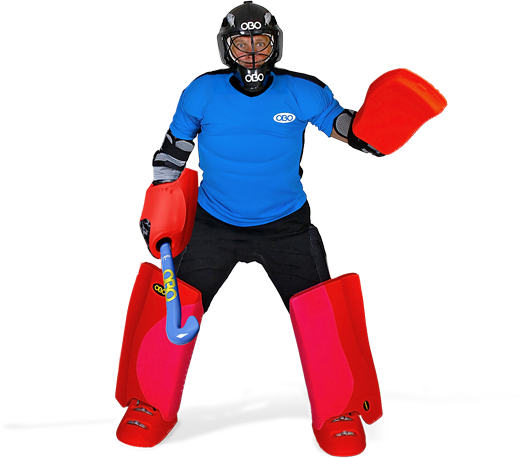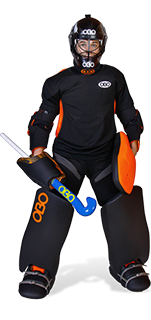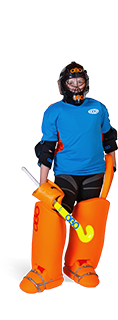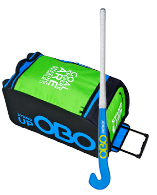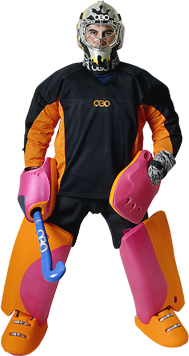KEEPERS RESOURCES

Developing the stick hand
 Question:
Question:
I have been involved in coaching for numerous years now, especially goalkeepers. I have had many ‘keepers pass through clinics and courses, that our institute has run, and been exposed to many differing levels of ability. Over the years I have developed methods, some probably a bit obscure, for ‘keeper coaching and training, but the one thing I have never been able to get right is developing the stick hand (right hand) of a ‘keeper. It seems some people either have it or they don’t. I hope that is not the case. The reason I am writing to you is out of frustration. I have seen many people pass through our clinics, but to this day I have not yet seen a keeper with the ability and potential as one recent keeper. She has something I have never seen before. As much as I tell her I am not sure if she believes me, so that is part of the reason I am corresponding with a proven professional as yourself. There is only one thing from holding her back. And yes you guessed it, her right hand. I have tried everything I know. I believe she could be something extraordinary with 20% improvement in stick hand. Please can you send us some extra methods and/or advise to help this kid develop into the star she can be.
Answer:
Stick saves can be an awkward issue because there are a lot of variables. Stick saves tend to be of the last resort variety, but how you play will dictate when and how they’re most effectively made.
As a frame of reference, I’ll point you to the OBO tip on Aerial Balls. Hand protectors have made a huge difference in the stopping surfaces available to the keeper on the right side. I started playing in the days of gloves and poorly timed stick saves were usually pretty disastrous, i.e. broken fingers. Mercifully those days are over.
Back to our frame of reference, the Aerials Tip, I’ve been very successful playing with holding my stick short and forward. A lot of coaches have different ideas about hand positions and where to hold the stick. You need to think about the style you want. A big part of coaching is knowing what’s successful for your keepers. If a keeper is unsuccessful making saves with their stick, why are they unsuccessful? As long as a keeper is successful, there’s no right or wrong way.
Typical problems I’ve encountered are that keepers don’t set themselves up to make a stick save. It’s looked at as a last resort save, so they just throw a stick out at the ball. As I mention in the tip, you set stick saves up with your legs. When a ball is well outside your body to your right and above your waist, you need to push off with your left leg to take your body to the ball. Going back to hand protectors, where I line the ball up to make the save will depend on how close the shot is to me. In a best case scenario, I want to take that ball on my RHP. By taking the shot on my RHP, I allow myself the biggest margin of error. By holding my stick short, I allow the stick shaft to be an extension of my forearm. In effect, I’m giving myself a four foot (130cm) forearm to make a save on my right.
I’m left handed. When I first started playing my stick side was significantly weaker. To say it was uncomfortable is just a tad understated. My coach taped my left hand to my body and hit tennis balls at me. I don’t know that you need to tie anyone’s arm to their body, but tennis balls are excellent. Set your self up with a racket and a ton of balls and as long as you’re reasonably accuracy hitting, you can effectively work the left and stick side.
Hand position will depend on where a shot is taken from. As shots come from closer distances, I don’t have the same reaction time, I have to make myself bigger so I’ll carry my hands farther outside my body. I like to look at things from other sports to see what I can learn. Going back to tennis, look at how players set up to return serve. Typically, they have both hands forward to take the ball on either their forehand or backhand. With the ball at the top of the circle, you have the most reaction time and the best opportunity to dictate how and where you want to play the ball. You can use that reaction time to set your body up to make saves and with aerial balls I do that more effectively with my hands more forward. With both hands forward, a keeper has a longer time to track the ball on to their stick or hand and equally important, has the opportunity to drop their shoulders and angle the ball to the side.
It’s great to have a keeper with talent and potential. It can also be frustrating. In our minds eye we see a finished product while the foundation is still being laid. There is no one way to develop talent or skills. As coaches we share our experiences. What’s worked for me, may not work for you, just as what works for one keeper may not work for the other. We learn from each other. The only thing that effects our ability to learn is our willingness to try new things and be open to change. Here’s to always learning.
Comments
Leave Your Comments Below















